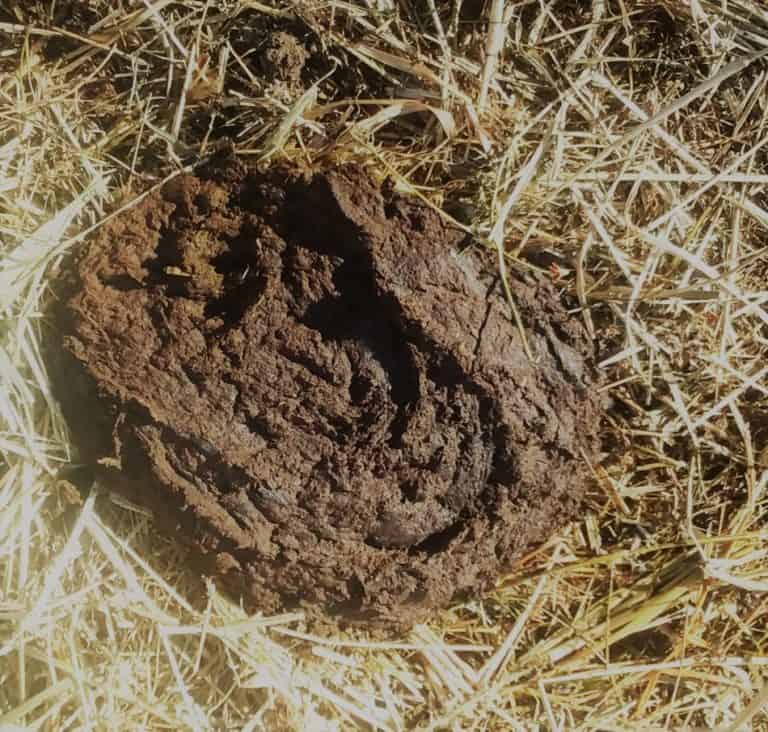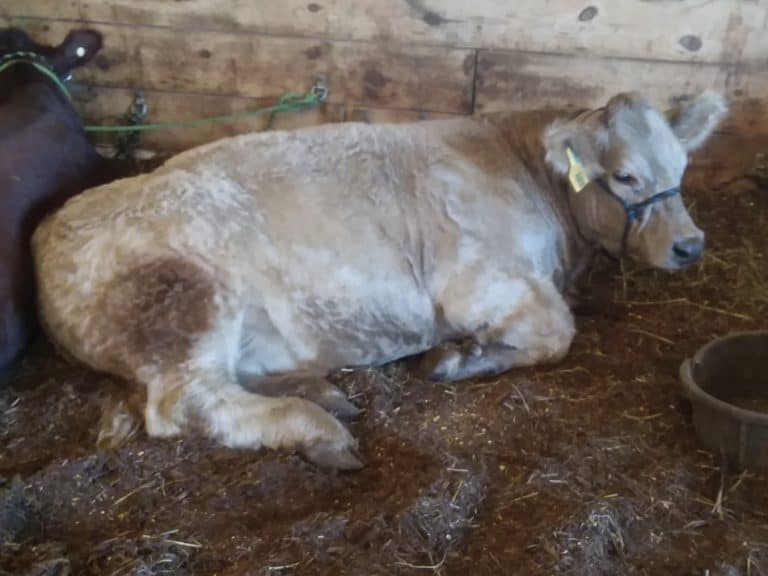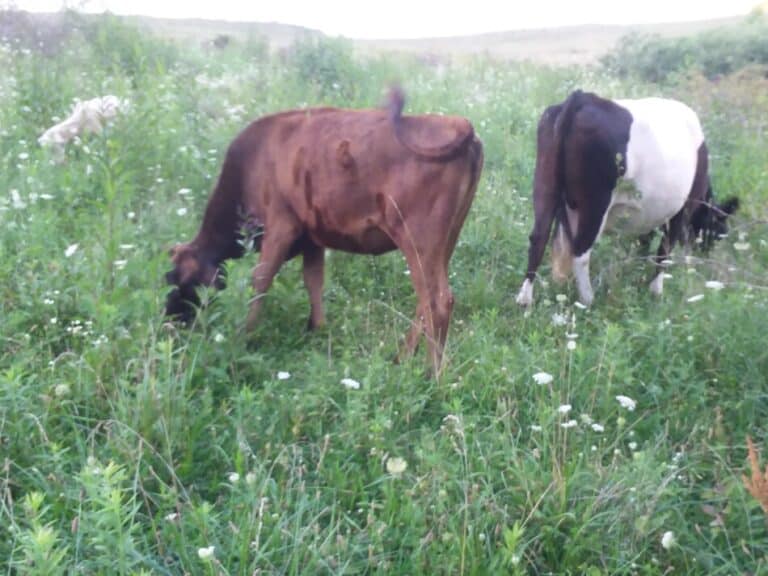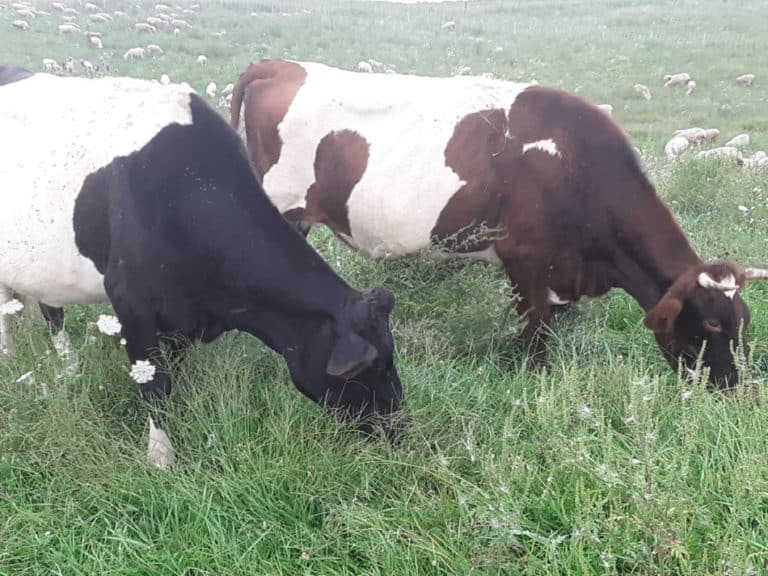Are Cattle Sustainable? Some Thoughts To Consider
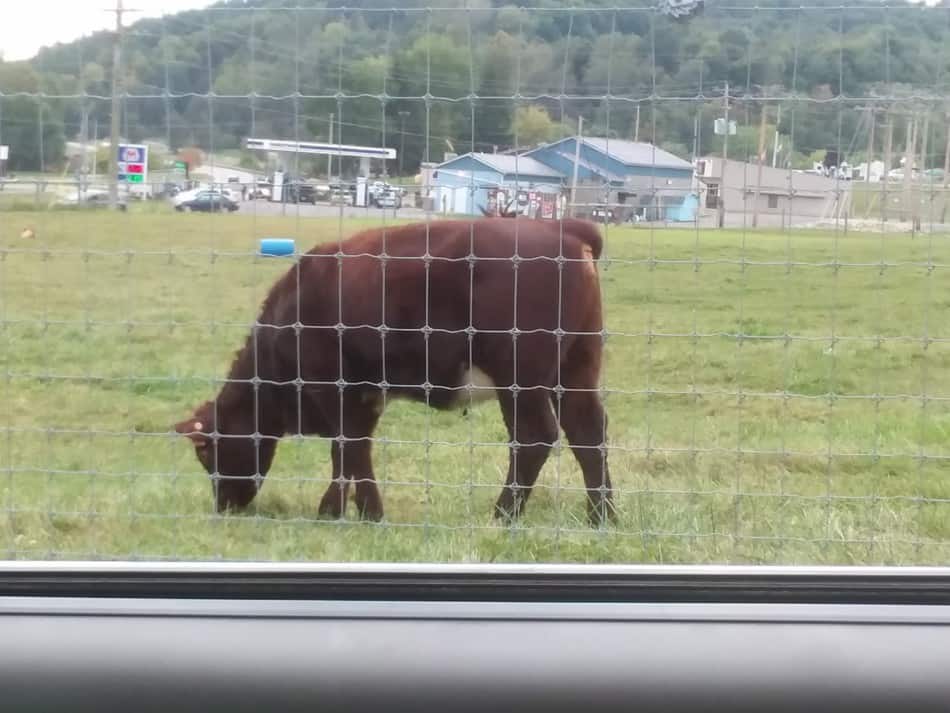
Cattle and sustainability are huge issues right now. Everyone, from businesses to individuals want to be seen as sustainable.
What, at least for livestock, does sustainable mean? And is it something we should be reaching for?
Cattle are sustainable when managed appropriately. More importantly, cattle can be regenerative, when managed appropriately, which means properly managed grazing cattle improve the fertility and forage production capability of the land on which they are grazed.
Cattle and sustainability is a huge topic currently with conflicting information pummeling you from all directions.
The statements go from cattle are destroying the ground with their feet and their poop, while polluting the air with methane gas leaking out of both ends!
To the polar opposite going something more like cattle are wonderful, nearly perfect in any and all situations and the only thing that will feed us (humans) enough calories for every person every day.
Is Raising Your Own Beef Worth It? walks you through a budget to see if getting your own cattle makes sense for you.
Wow, that’s a big division in thoughts and outlook.
That’s also a lot of emotion and opinions but not a lot of practitioners (people that have hands on experience with cattle) or information.
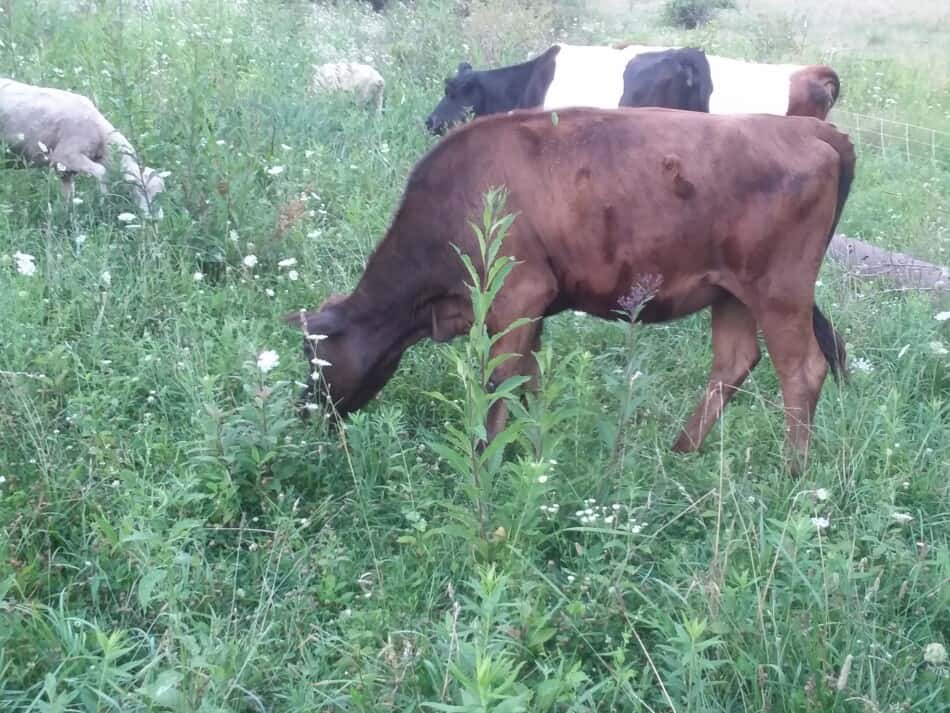
Where to go for the answer? What claims are true and what claims are just emotional outpourings seriously lacking in facts?
Let’s look into some of the topics regarding cattle and sustainability that are easily found online and see what we can find to form an educated opinion.
Cattle are sustainable
Yes, cattle are sustainable. Whether or not sustainability should be the goal is a topic covered later in the article.
Using the definition of the word sustainable as listed next, cattle are currently using a level amount of resources to produce meat or milk.
For example, the feed needed for a weaned calf to reach finished weight this year is the same as last year and the same as next year, that is sustainable.
Cattle eat plants that are taking in and using the CO2 (carbon dioxide) that we and all other animals breathe out as “used” air.
The plants are made to live on this CO2 rich air, take it in and “breathe out” O2 (oxygen) rich air that we need to breathe.
Notice what just happened there CO2 goes into plants and O2 comes out. Where’s the C that went in?
The C stands for carbon and the carbon is left in the soil to build organic matter.
This makes the soil healthier and better able to support the growth of next cycle, when it gets eaten off and starts to grow again.
Somehow this always gets glossed over, but being alive means eating, no matter what your chosen diet, you still consume to live.
What about the sustainability of vegetables, grains and fruits?
Most of these come with tillage, which burns up organic matter, and many of these plants will be produced with pesticides that come at a high cost to workers, insects and wildlife.
Scientific American has an article titled “Lettuce Produces More Greenhouse Gas Emissions Than Bacon Does”.
Paul Fischbeck, professor of social and decision sciences and engineering and public policy said “You can not just jump and assume that any vegetarian diet is going to have a low impact on the environment.”
The article goes on to explain that per calorie fruits and vegetables are resource intensive, and circling back to the title, lettuce produces three times! the greenhouse gases of beef!
Scientific American also wrote that following the USDA eating guidelines would increase energy consumption of your diet by 38%, increase water used to grow your food by 10%, and increase greenhouse gas emissions to produce your food by 6%. Not a great idea.
I’m not saying plants are are poor dietary choice, or that only meat eaters are caring about the soil.
I am saying that it is inaccurate to say that livestock production always is the bad guy when talking about water and energy usage or greenhouse gases.

Sustainable means it can keep going
Sustainability means that a process or state can be maintained at a certain level for as long as is wanted.
Simple English Wikipedia
Sustainability means maintaining
This means that anything that is considered sustainable can be maintained as is without additional support.
It will continue as is and not run out of something or need additional somethings to keep it going, like more money than is currently budgeted, more resources, more land, more people, etc.
But this also means that whatever is being done right now is acceptable as the base, the normal level of need and resource usage, since we would be sustaining the current way of doing things.
Sustain means stay the same, not get worse or better.
Sustainability of food concerns all of us
Everyone should be concerned with sustainability as a starting point, so we have a point to compare with to prevent backsliding.
The concern about sustainability should be everywhere in our lives, we just usually only apply it to agriculture or business.
How sustainable is your job, your lifestyle? What about your spending habits or your eating habits?
Cattle food sources are sustainable
Now we circle back to cattle, but hopefully not without realizing sustainability is everywhere, in everyone’s lives.
The big one here is diet of the cattle. Cattle eat plants that are inedible to humans.
27% of land in the U.S. is grazed by cattle eating grasses and other plants that will not be able to feed people any other way than being eaten by an animal that we then eat.
Why Does A Cow Eat Grass is an article I wrote that explains more of the animal biology of eating grass if you are interested.
Cattle graze land unsuited to crop farming
Many of these pastured lands are unsuitable for crop production, tilling and growing vegetables or grains in fragile landscapes strips out the few nutrients that are in place and leaves the area worse off than before.
Cattle provide manure for soil fertility
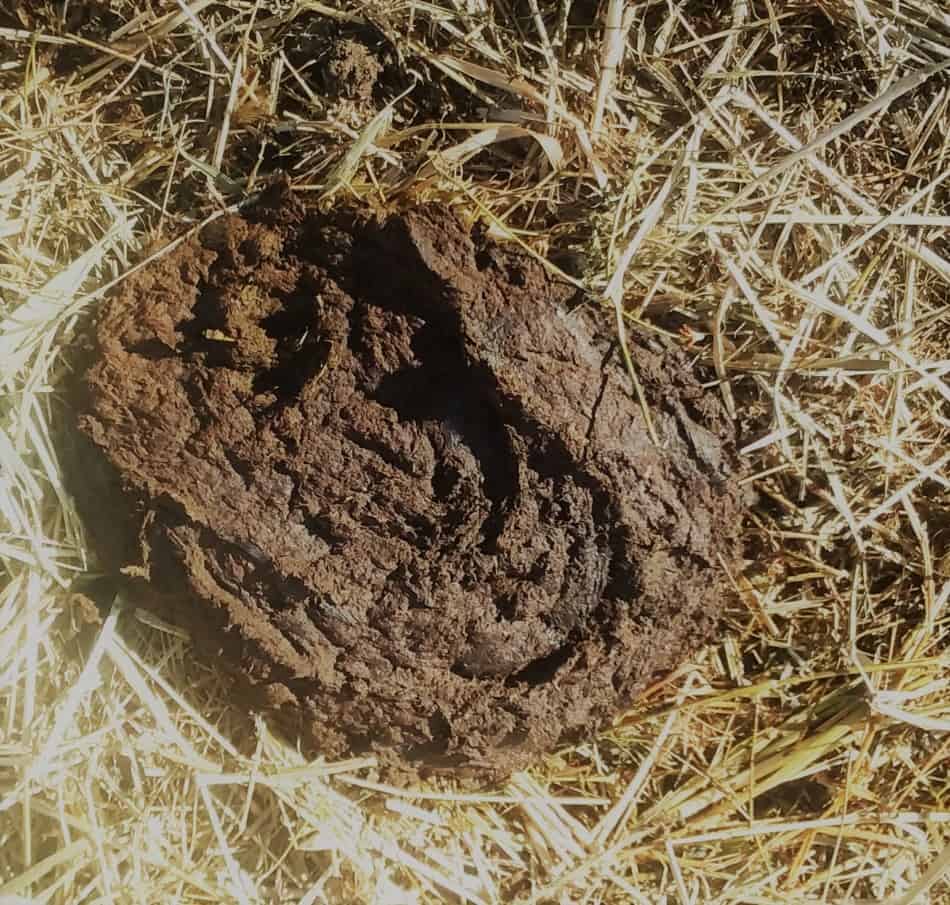
Every day of every year cattle eat, this you can count on. They also like to walk around and they poop. Every day.
So they are the ultimate in sustainability, since their needs do not change throughout the year or year over year.
Cattle reproduce themselves
Cattle reproduce, generally one calf every year per cow starting when she is two and going until she is ten+ or no longer productive.
This means that cattle herd numbers can be maintained even when selling off the calves every year.
Meaning to have income the cattle owner does not have to sell the herd base, the extra animals can be sold or kept to replace culls and the base herd numbers remain the same.
Adult cattle maintain body size
Once cattle are mature they do not continue to grow, so the barn that holds 40 head today will still hold 40 head next year.
The same for pasture and feed needs, not including crazy weather like drought years when the same pasture will support half as many cattle (or less) because of poor growth.
Cattle equipment and fencing is long lasting
Cattle fencing and equipment will last quite a while, once in place.
Permanent fencing, for instance, should last for 30 years or more so once it is set up it can be reused for decades.
Most cattle farms are family businesses
91% of beef farms in the U.S. are family owned, so the likelihood of cattle being around next year is high, since the owners are spread out over the nation.
This means the supply of the cattle is sustainable.
Non meat uses of cattle are all around us
Additionally, cattle are used extensively in other daily life items so none of the animal is wasted.
The well known uses of cattle aside from meat and milk are leather items like wallets, shoes and purses.
Taking a second look you will find cattle everywhere in our lives: cattle are used to make tires, asphalt, dyes, inks, adhesives, plastics, photo film, vitamin capsules, charcoal and glass.
The organs and glands have medical uses and everyday uses for things like insulation, antifreeze, shampoo and conditioner, and instrument strings.
Maintaining poor outcomes is also sustainable
Producing more manure than you have land to appropriately spread it on, is sustainable.
What? That’s not sustainable! Actually it is sustainable since nothing about the situation has changed.
The overabundance of manure compared to the land available for the manure remains the same as it did last year and will be the same this year, that is a constant situation and therefore sustainable.
This is an ironic one, since manure is a very valuable resource. But have too much in one spot, now the should be resource is viewed as a problem.
Unsustainable cattle raising increases needs
Unsustainable: not capable of being prolonged or continued
Merriam-Webster.com
Unsustainable cattle means increasing needs
Unsustainable means needing more and more of something, the current usage of the resource will not be adequate in the future.
So spending more money than you are taking in a month is unsustainable, you can do it for a while but it will definitely catch up with you later.
Applying this to agriculture we can determine that anything that takes more resources later, tomorrow, next year, etc. than today is not sustainable.
For example: needing more and more fertilizer and pesticides for the same or lower yields of corn or soybeans is unsustainable.
This situation continues to need more resources for the same result that was previously obtained with less resources.
Unsustainable cattle raising can have short term benefits
No one likes to hear this but the short term answer is yes, there are benefits to being unsustainable.
Anytime the immediate or short term gain outweighs the long term consequences or results the unsustainable option will be chosen.
This is why you ate the junk food (again), or why you watched a movie instead of getting to bed early, you close short term benefit over long term benefit.
Applying this to agriculture there are many ways to be unsustainable, generally to get more money now in hopes of a better situation later.
For example: producing more milk in a low price year.
Your check is a little bigger now but will be lower in the future because the supply of milk is larger than demand for the milk, so price will stay low.
The same thing happens with grain, growing extra to combat low prices keeps future prices low because supply is high.
Some cattle raising practices are not sustainable
Using cattle to manage your land can be wonderful, but it also can be a mess, with the land being worse off than before.
Why? Cattle are a tool to use, so inappropriate use of a tool takes more than it provides leaving less resources than before you started.
Set stocking cattle is unsustainable
For instance, set stocking an area is not sustainable.
Set stocking means keeping the animals in the same pasture the whole year so the plants and the soil never get to rest.
Set stocking will make that area grow less and less forage since the cattle (and all grazing animals) will nip off the regrowth of the plants they like best.
This weakens the plant and compact the soil with constant pacing around.
Constant grazing with no rest period is unsustainable since the pasture will be less productive next year.
Consider the whole cattle farm regarding sustainability
With cattle specifically, overproduction as a whole farm system is not sustainable.
Whether overproduction of milk or manure, too much for the area is too much, and therefore a problem.
Each part of the farm continuing on as is actually is sustainable, but that is only for that specific part of the enterprise.
When you take in to account all of the parts of the farm together you will see that one aspect of the operation is overwhelming the farm as a whole.
Since the overwhelm keeps getting bigger, this is unsustainable.
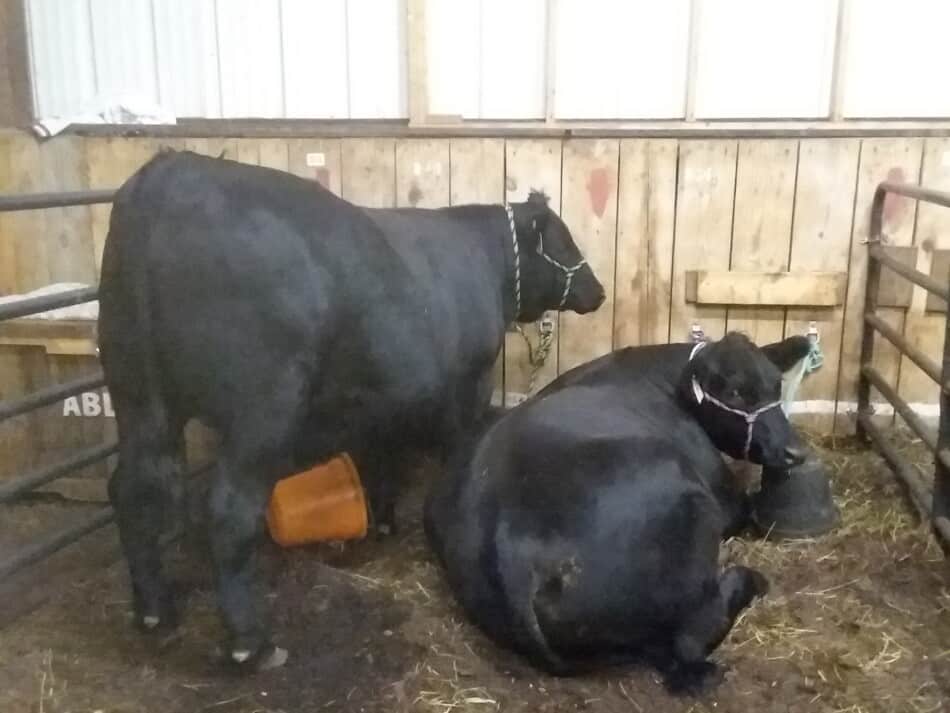
Sustainability should not be the goal
Sustainability is the current feel good and get good press word and environmentally friendly idea to be associated with.
I am concerned that most people do not realize what sustainable actually means therefore are not supporting what they think they are supporting.
Agribusiness is not sustainable
When multi national agribusiness companies start talking cattle sustainability, I am suspicious.
A business needs to grow which requires more income. A business can not grow if based on something that remains constant, the very essence of the meaning of sustainability is remaining constant.
Meaning despite what is said growing the business is in direct conflict with sustainability.
The spin doctors of media and marketing are corrupting, or at the very least warping, a term to suit themselves and sound good for public relations.
In other words, shamelessly misleading shoppers and concerned eaters.
Sustainability means stagnant. Businesses have to grow or die. No business is hoping to be stagnant.
Cattle sustainability is a short sighted goal
Keeping sustainability as the goal is short sighted.
We do not want to be continuing on as is at the current pace, not getting increases in degradation of the land, but not restoring it either, just maintaining what we have.
Sustainability means maintaining current ways and results.
Can cattle be more than sustainable
The big question, and I hope by now you realize the answer- yes, cattle can be sustainable.
In my opinion, raising cattle should at a minimum be sustainable, regenerative being the goal.
They also can be mismanaged to be unsustainable.
Cattle are a tool for soil and farm health
So in reality cattle are neither sustainable or unsustainable it is the management system the cattle are in (the people) that is in question.
Just like is a knife good or bad? It can be used for either, cutting vegetables or threatening people, but the choice is made by the person, not the knife.
The tool (the knife or the cow) is neutral.
Regenerative cattle farms is the goal
I hope for better than just sustaining from all of us and strive for much more than sustainability myself.
I am aiming at regeneration, not just sustainability.
I want our farm, our animals, our lives to be better than they were last year and better next year than they are this year. And on and on.
This is not sustainability, this is regeneration, making it better than it was before.
Building fertility is regenerative cattle farming
We need to be building organic matter, keeping our soil in place, improving fertility of the fields, both grass and crop so that we have less disease and insect pressure every year.
Being better than sustainable is doable. Many are currently working on it, but sadly just as many are not.
This is little stuff that builds year after year, the progress is slow.
But the losses did not occur in one or two years so it is not reasonable for the regeneration to happen in one or two years.
Yes, I do know what I am saying in terms of time and yes, I am aware that it will cost in the short term, but this is just to make up for the excessive taking of the past.
Living soils and whole farm systems working together will improve year over year, no constant depletion required.

Cattle and regeneration are perfect together
So how are cattle connected to regeneration? The natural behavior of cattle is the perfect fix for worn out land.
Cattle naturally group up, eat most everything that is in the area then tromp and poop or urinate on the rest of the grass then they move on and repeat.
This is the exact recipe for fixing dilapidated, worn out and abused land.
Experts are restoring land with cattle
Don’t believe it? Look up Allan Savory videos online.
A great one to start with is Examples of Grassland Restoration-Excerpt from Talk by Allan Savory at Tufts University.
This will give you a good place to start and is one of the quicker videos to watch, all are super informative but generally much longer.
There are also some Allan Savory talks on using sheep to improve and restore land throughout Africa.
The basic ideas would be very similar if not the same, for both cattle and sheep, so if the sheep videos are what you find just watch those.
A U.S. based example of regenerating the land with cattle (and other animals) is Polyface Farm in Virginia. They have plenty of videos available as well and are in a humid climate that may be more similar to where you live.
Another example I found is Joyce Farms, in Alabama. They have a wonderful video called A Regenerative Secret.
Greg Judy of Green Pastures Farm in Missouri also has tons of experience to share.
He has a website and a great YouTube channel. Check out his info and consider subscribing to his channel-I did.
You can promote regenerative cattle raising practices
One of the simplest ways that you can do something is to vote with your wallet.
Anytime you spend your money, at the store or online, you are saying that you agree with all the embodied costs it took to get this item here, or at least all those costs are acceptable enough to you to get you to part with your dollars.
Stop supporting things you do not believe in.
There are plenty of great people doing wonderful things with cattle, support them.
It turns out sustainable dairy farms do exist.
The Food Rush
The Food Rush did and article on sustainable farms in the United Kingdom, farms that are making a positive impact on the land and communities are able to be found.
While they are in the U.K. there are plenty of farms in here as well, you just have to look.
Maybe you need to be more conservative with your spending for now, I can relate. Work it in as you can.
Support cattle producers that you believe in one day a month and add more as you can.
Put your junk food and pop money aside in a jar or envelope and buy great meat when you get enough in the jar, it’ll happen faster than you think.
Bias alert-I love cattle and regenerative farming
Please Note: Everyone is biased. The more important (read emotionally charged) a topic the more likely people are to ignore their own bias, instead stating their personal bias as fact.
Bias alert: I love cattle and have been a cattle owner for 20+ years, just to be clear on where I am coming from.
I believe the best stewardship of the land is possible through livestock management and I am in favor of family scale farming.
Why am I telling you this?
Who cares? Well, I’m hoping you do, but if you don’t, you should.
First, so you can see the things that I write are coming from my perspective, my bias.
Second, so you can think over your own bias and fact check it.
Read over information written by those you agree with and those you disagree with to get a solid foundation of knowledge.
Sort through the information and decide where to stand based on reality not just emotion.
The people listed in the article are just a few of many folks doing great stuff with regenerative agriculture, cattle being just one part of it. Look into it and see the opportunities.
Resources: Beef checkoff article Beef Sustainability; The Food Rush;
Related Questions
What are five common breeds of beef cattle?
Five common breeds of beef cattle are Angus, Hereford, Charolais, Simmental, and Limousin.
What cattle breed is best for beef?
The best breed for beef production is the breed or cross of breeds (called a cross bred) that will do well in your area.
The cattle suited to the growing and weather conditions you normally have each year will grow, stay healthy and be the most economical to raise.
